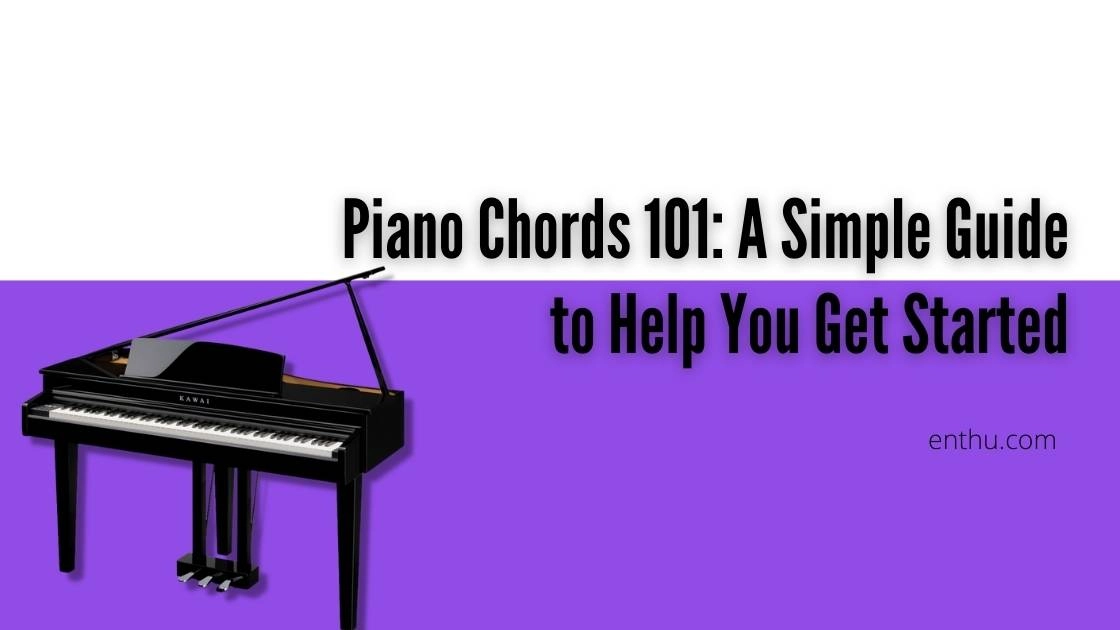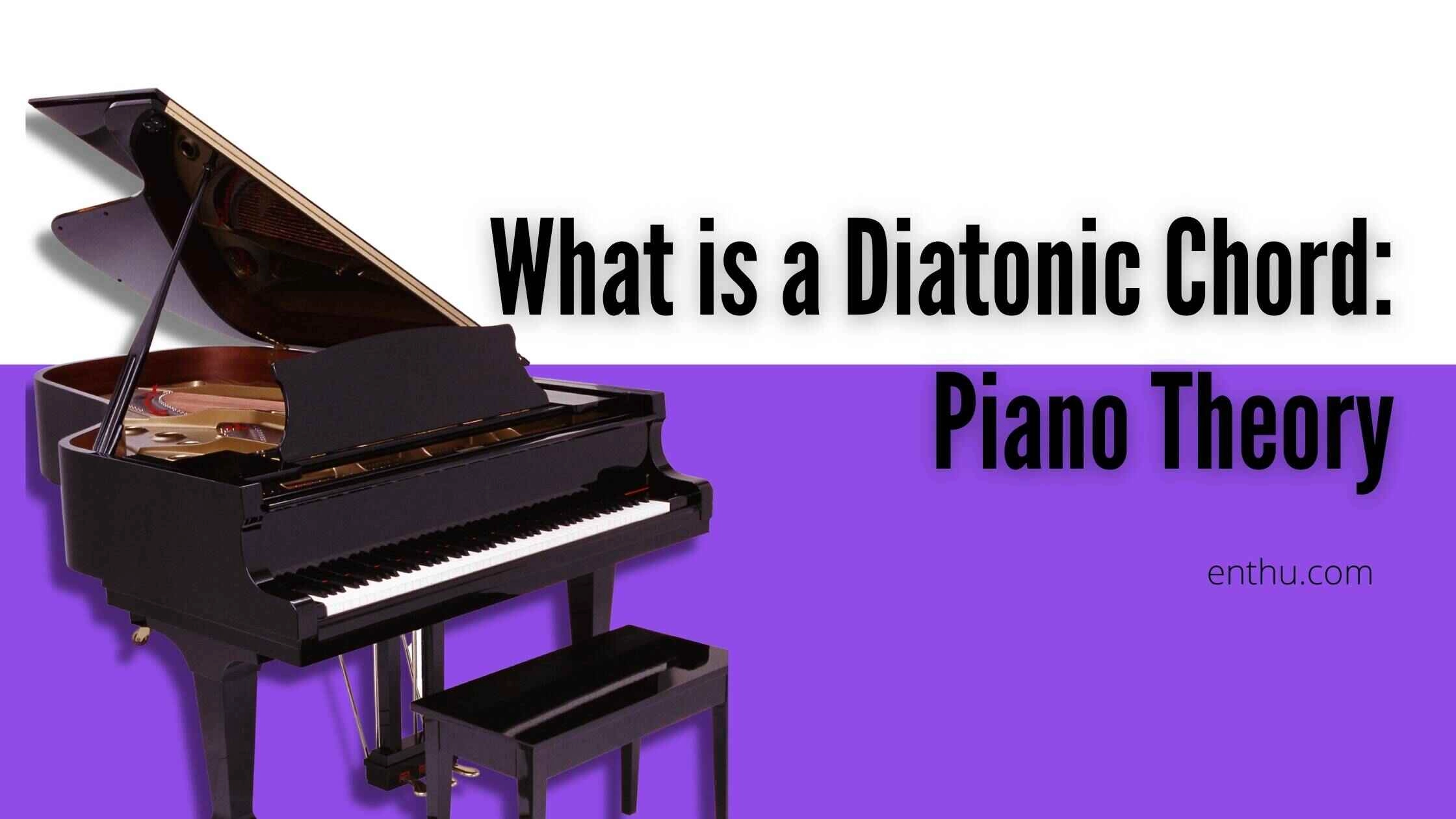Playing chords on the piano is cool. It opens up new horizons to your musical capabilities. I understand that it is hard for a beginner to get used to all the piano chords at once.
Especially, understanding diminished chords can be a task. What if I told you that a few chords would easily help you remember all the chords? Yes, you have guessed it right. I am talking about diatonic chords

What is a Diatonic chord?
The word Diatonic is derived from Greek, which translates to 'progression through tones.' Chords that originate from the notes of a particular key are called diatonic chords.
For example, any note in the C major scale is a diatonic chord of the C Major scale, such as Dmin7, Emi7, FMaj7, CMaj7, G7, B7b5, and Amin7. Let's make it simpler for you: Think about a group of chords tied together by the same note of a key, that is, a diatonic chord.

Each key on the piano comes with 7 basic diatonic chords because every note on a key is capable of serving as the root note of a chord.
1. What is Diatonic Chord's Progression?
The chord progression is when multiple chords are played together on a uniform scale. For example, taking diatonic chords of the C major scale and playing them sequentially should be called a chord progression.

So, in a diatonic chord progression, the chords are made of the notes of a particular key. For example, C diatonic chord progressions are Dm, G, and C.
All the above-mentioned chords have the same key of C Major. All the C Diatonic Chord progression chords are C, Dm, Em, F, G, Am, and B°.
2. What's in a Name?
Do you know what a scale degree is? Well, scale degree is the process of naming notes on a scale, such as
1 (root), 2, 3, 4, 5, 6, and 7
However, naming a diatonic chord is slightly different from naming notes. These chords are identified with

Roman numerals (Such as I, II, III, IV, V, VI, and VII)
depending on the scale degree.
Uppercase Roman numerals
are used for major diatonic chords, and
lowercase numerals (i, ii, iii, iv, v, vi, and vii)
are used for minor diatonic chords. No variety attaches to a given major or minor triad, because the way these chords are built is essentially identical from one major key to another.
However, each scale degree has its own unique name in different keys and is used for minor diatonic chords.
Sometimes, special characters/symbols are added to the numerals to denote a few special diatonic chords, but let's get to them later.


Scale Degrees
The first step toward understanding diatonic chords is to learn scales. A scale is a sequence or combination of particular notes organized by the same pitch. Here is an example of the notes on the C Major scale:


As you can see, every note is assigned a number. These are referred to as degrees.
1. Names assigned to all the degrees
Tonic
Supertonic
Mediant
Subdominant
Dominant
Submediant
Leading Tone
2. How do You Build a Diatonic Chord?
Diatonic chords are three-note chords (triads). No need to worry; these chords are easy to make. Here's a sheet for better understanding:

Notes on diatonic chords make up a claw-like shape on every note of the keyboard.
3. Diatonic Chords on C Major Scale
Tonic (C): C-E-G
Supertonic (D): D-F-A
Mediant (E): E-G-B
Subdominant (F): F-A-C
Dominant (G): G-B-D
Submediant (A): A-C-E
Leading (B): B-D-F
These are the diatonic chords on the C major scale. Once you sit down to play all of these, you will find out that some of these sound happy and some sad. This is because some of these chords are on a major scale, and some are on a minor scale. As we previously discussed, minor and major chords are identified with uppercase and lowercase Roman numerals.
4. Let's Build Diatonic Chords
On Other Scales, No need to get nervous, the process of making diatonic chords on other keys of a different scale is similar to the C major scale.
It is rather simple; find the degrees of the particular scale (for instance, D Major) and figure out the claw-shaped notes on the triad. You only need to be careful about the sharps and flats.
For example, D major has two sharp notes (C# and F#). So, all you need to do is make the F and C note sharp whenever you run into them.
5. Diatonic Notes on D Major scale
Tonic (D): D-F#-A
Supertonic (E): E-G-B
Mediant (F#): F#-A-C#
Subdominant (G): G-B-D
Dominant (A): A-C#-E
Submediant (B): B-D-F#
Leading ( C#): C#-E-G
6. What Songs Can You Play with Diatonic Chords?
It's time to leave the theory part out there and play some beautiful melodies with these chords. Here are some famous yet easy songs you can play. Cocaine - Eric Clapton I Saw Her Standing There -The Beatles Peggy Sue - Buddy Holly More Than a Feeling -Boston Summertime - Porgy & Bess


Conclusion
Now that you have learned about diatonic chords, hold the right posture, and start practicing. It would be hard to get used to the chords at first, but I know that you can master them in no time with just a little practice. Check out EnthuZiastic Piano Lessons for an immersive learning experience. Aspire for a magical musical journey ahead!
FAQs
1. How do I practice diatonic chords?
The first step is to identify the chords. Start with the C major scale and identify the chords one by one. The best way to practice is to play them individually first and then play them on the chord progression. You can also play a few famous songs to practice these chords.
2. Why is the Diatonic a triad?
The diatonic chords are triads because of their tonal harmony. If you try to make an extended version by adding notes, then the tonal harmony will fall apart; just like most chords on the piano, it offers a beautiful soundscape with its tried formation.
3. What are the benefits of playing diatonic chords?
If you play and master them, I can assure you that you can play any chords on your piano smoothly after that. Practicing these chords improves aural capabilities to such an extent that you will be able to identify and discover chords from the sounds.


Comments